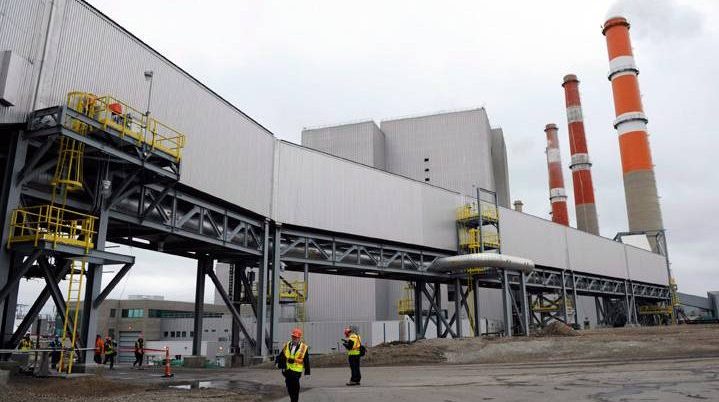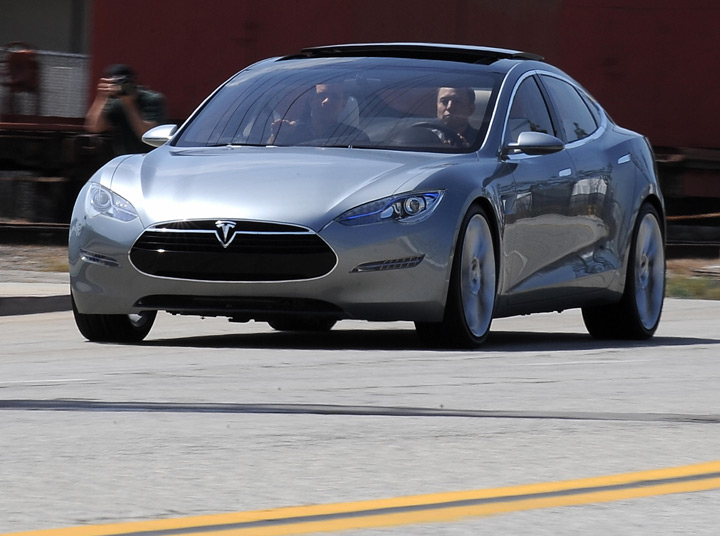Oil prices might be falling right now, but people around the world are looking at ways to conserve energy or produce it more cleanly. It’s led to some cool innovations and experiments this year. Here are some of 2014’s most interesting green projects and milestones:

World’s largest solar plant comes online
Video: Promotional video showing the construction of Topaz Solar Farms, from MidAmerican Renewables
The world’s largest solar plant, called Topaz Solar Farms, opened in California’s San Luis Obispo County this year. The plant has a capacity of 550 megawatts – enough to power 160,000 average California homes, according to the developer, First Solar.
The solar field covers approximately 3,500 acres of the inland Carrizo Plain, and came online in November. Its status as the world’s largest solar field will probably be short-lived though – another California project, called “Solar Star,” is scheduled to be completed in 2015. It has a planned capacity of 579 megawatts.
Norway breaks electric car sales records
According to numerous news reports, the electric Tesla Model S broke sales records in Norway in March 2014. Not only was it the top-selling new car in the country (a title it and other electric models have held before), it also captured the record for one-month sales of a single model of car in Norway… ever. These reports are based on figures from the Information Council for Road Traffic, a national transportation industry group.
Norway’s national statistical agency, Statistics Norway, said that there were more than 23,000 electric cars in the country at the beginning of April 2014. At the end of 2013, about 5.5 per cent of all new cars sold in Norway were electric, amounting to just less than 1 per cent of all cars in the country. That’s just purely battery-powered electric cars, not hybrid vehicles.
There are reasons for this of course. Norwegian policies encourage electric car use, sparing purchasers some of the heavy import taxes that Norway normally imposes on vehicles. Electric car owners are also able to park for free in city centres, freely use bus and carpool lanes and don’t have to pay to use most toll roads and some ferry connections.
Helsinki unveils experiment to cut down on car ownership
- Life in the forest: How Stanley Park’s longest resident survived a changing landscape
- ‘Love at first sight’: Snow leopard at Toronto Zoo pregnant for 1st time
- Carbon rebate labelling in bank deposits fuelling confusion, minister says
- Buzz kill? Gen Z less interested in coffee than older Canadians, survey shows
The city of Helsinki, Finland, has a different take on transportation. In July, it announced a public transit experiment – something it thinks could lead to drastically-reduced car ownership. Under this model, it believes, many residents won’t need a car.
According to reports in the Guardian and the Helsinki Times, a single transit app will link together taxi services, buses, carpools, trains, car-shares, bike-shares and more, to provide citizens with many options at different price points for getting to their destination. The idea is that if public transit options are easy and convenient enough to access, people won’t need to buy a car.
The idea is based on a master’s thesis by Sonja Heikkilä, which so impressed Helsinki that they have decided to test the concept with people working at some large employers in the city centre.
This isn’t Helsinki’s first step in this direction: in 2013, the city began a minibus public transit system, called Kutsuplus, which is like a mix between a bus and a taxi. Customers arrange a pickup and destination, share the ride with other customers travelling in the same direction, and pay more than for a regular city bus, but less than a taxi, for their ride. The entire trip, including payment, can be arranged through a smartphone.
Saskatchewan builds massive carbon-capture project

Saskatchewan opened the world’s first commercial-scale carbon capture and storage facility in October. The Boundary Dam carbon capture project, near Estevan, is a coal-fired power plant that captures CO2 gas which would normally be released into the atmosphere, and carries it through a pipeline to oil fields. There, the gas is used in “enhanced oil recovery” – which means pumped into the ground to improve oil flow.
CO2 not used in oil recovery is pumped deep underground for storage. The idea behind projects of this nature is to enable cleaner power generation from fossil fuels. The plan has attracted criticism however, as John Bennett of the Sierra Club Canada and others suggested that the money could have been better spent on other forms of energy.
China and the US agree to reduce carbon emissions
In November, China agreed for the first time to cap its greenhouse gas emissions. Now, the date is a long way off – 2030 – but setting any date at all is considered progress for China. It had previously only agreed to a gradual reduction of its emissions growth rate. It also plans to increase its share of zero-emissions energy use to 20 per cent by 2030.
The United States also pledged to reduce its emissions. It plans to cut emissions to 26-28 per cent below 2005 levels by 2025, a much more specific target than China’s.
These two countries are the world’s largest carbon emitters, so having them come to an agreement on carbon reduction targets is something, even if those targets are far behind others’, like the European Union’s. The United Nations Framework Convention on Climate Change’s executive secretary, Christiana Figueres, said that the US-China deal provides “practical and political momentum” toward a prospective climate agreement in Paris in 2015.





Comments